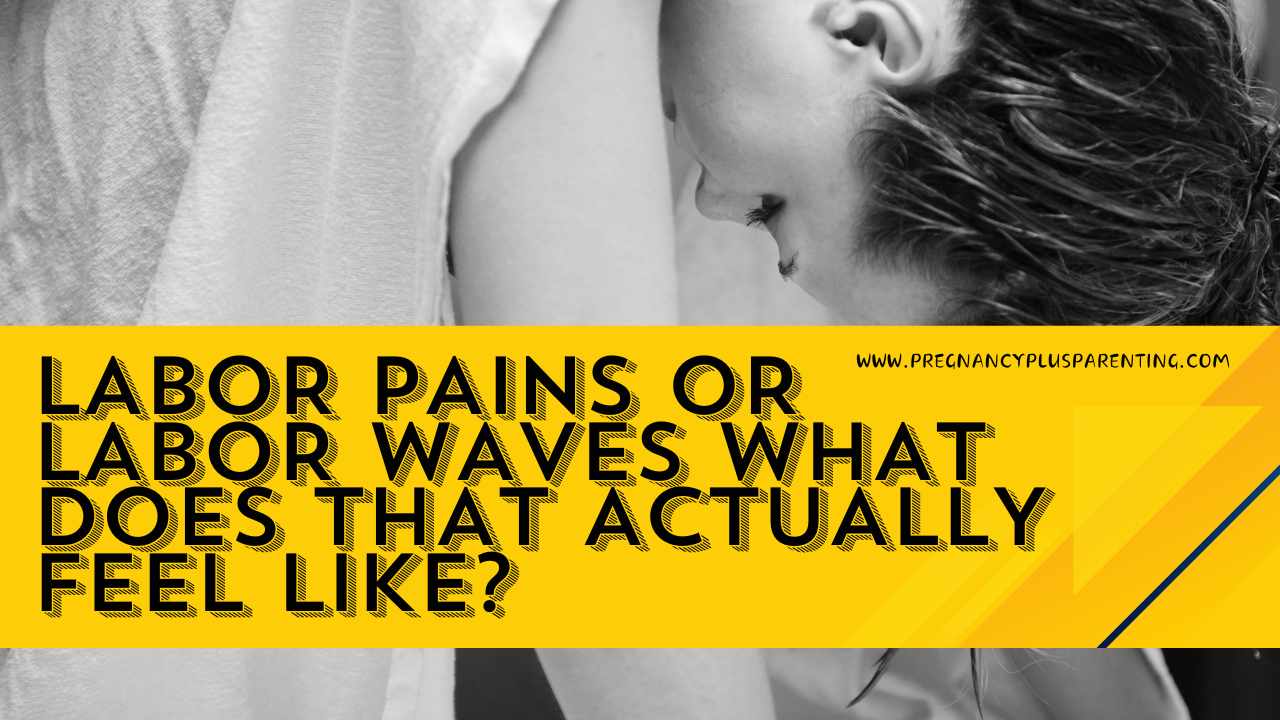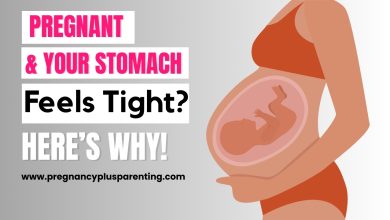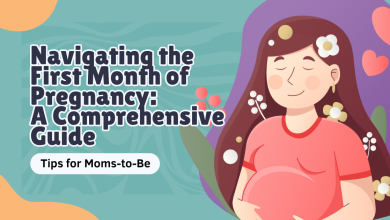Labor Pains or Labor Waves – What Does That Actually Feel Like?
Introduction
If you’re pregnant, you’ve probably heard countless stories about labor—some inspiring, others downright terrifying. And at some point, you may have asked yourself: What will it actually feel like?
The truth is, no two labors are the same. Some women describe contractions as overwhelming pain, while others experience them as powerful surges or waves of energy. That’s why you’ll often hear two different terms: labor pains and labor waves.
Both describe the same physical event—your uterus tightening and releasing to help your baby move down—but the language we use shapes how we experience it. In this article, we’ll dive into what labor really feels like, why women describe it so differently, and how you can prepare yourself to face it with confidence.
Understanding Labor Contractions
At the heart of labor sensations are uterine contractions. These are rhythmic tightenings of the uterine muscle, working to thin and open the cervix so your baby can be born.
-
In early labor, contractions are usually mild and irregular.
-
In active labor, they become longer, stronger, and closer together.
-
In transition, the final stage before pushing, they reach peak intensity.
Think of contractions as your body’s built-in tool: each one is a step closer to holding your baby.
Labor Pains vs. Labor Waves
Why Some Call It “Pain”
Traditional medical language describes contractions as “labor pains.” It makes sense—many women do experience them as intense, even overwhelming sensations. The unpredictability, along with exhaustion, adds to the perception of pain.
Why Others Call It “Waves”
In hypnobirthing and natural birth circles, contractions are often called “waves” or “surges.” This softer language reflects their rhythm: they build gradually, peak, and then fade away. For many, this reframing makes the experience feel less frightening and more purposeful.
What Labor Feels Like – Common Descriptions
Like Strong Menstrual Cramps
The most common comparison—contractions often feel like period cramps magnified several times over.
Tightening Around the Belly
Some describe it as the belly hardening, as though a tight band is squeezing around the middle.
Deep Back Pain
Especially if the baby is positioned “sunny-side up,” contractions may radiate to the lower back, hips, or thighs.
A Rising and Falling Wave
Every contraction follows a pattern—building, peaking, and easing off. This wave-like rhythm helps women anticipate and manage the sensations.
Heavy Pelvic Pressure
As the baby descends, pressure becomes a dominant feeling, sometimes replacing sharp pain with an overwhelming urge to push.
Muscle Cramps You Can’t Stretch Out
Some women say it feels like a charley horse in the stomach—an intense muscle cramp you can’t release.
Surges of Energy and Sensation
Others describe it not as pain, but as a powerful surge—like the body taking over with energy that demands focus.
How Labor Sensations Change Over Time
Early Labor
Contractions may feel like dull cramps or backache, usually manageable and spaced far apart. You may still be able to talk, laugh, or rest between them.
Active Labor
As the cervix dilates more, contractions become harder to ignore. They grow longer, closer, and more intense, often requiring focused breathing or movement.
Transition Phase
This is often the most intense part of labor. Contractions may overlap, leaving little recovery time. Many women feel overwhelmed, shaky, or even doubt their ability to continue—but it’s also the shortest stage.
Pushing Stage
The sensation shifts again. Pain often gives way to pressure and the primal urge to push. For some, this stage feels empowering rather than painful.
Factors That Influence How Labor Feels
Baby’s Position
If your baby is head-down and facing your back (optimal position), labor may feel smoother. If positioned differently, it can lead to more back pain.
Length of Labor
A fast labor can be shocking in intensity, while a longer one may bring exhaustion.
Pain Tolerance & Mindset
Every person perceives sensations differently. Fear and tension can make pain feel worse, while calmness can make it easier to manage.
Medical Support
Epidurals, nitrous oxide, or other pain relief options significantly alter the experience of contractions.
Coping With Labor Pains or Waves
Breathing Techniques
Slow, controlled breathing helps calm your mind and oxygenate your body. Many moms imagine “riding the wave” with each breath.
Movement and Positioning
Walking, swaying, kneeling, or using a birthing ball allows gravity to help and can reduce discomfort.
Comfort Measures
Warm showers, baths, or compresses can relax tense muscles. Massage and counter-pressure on the back also bring relief.
Mental Techniques
Visualization, affirmations, or focusing on a single object can distract from the intensity.
Medical Pain Relief
Epidurals, spinal blocks, and medications provide strong pain management. Each option has pros and cons, so discuss them in advance with your doctor or midwife.
The Emotional Side of Labor Sensations
Labor isn’t just physical—it’s emotional. Fear can make contractions feel worse, while reassurance from a supportive partner or birth team can make them more bearable.
Language also matters. Calling contractions “waves” instead of “pains” doesn’t erase the intensity, but it can shift your mindset from dreading them to working with them.
Real Stories – How Women Describe It
-
“It felt like the worst period cramps of my life, but with a purpose.”
-
“A surge of pressure that demanded all my focus.”
-
“Like my whole body was hugging itself tight, then letting go.”
-
“Back pain that wrapped around my body in waves.”
These differences remind us that no two births are identical.
Shifting the Perspective
Instead of seeing labor as something to survive, many women find strength in seeing it as something to embrace. Each contraction is a step closer to meeting your baby—a wave carrying you to shore, not drowning you.
Conclusion
So, what does labor feel like? The answer is: it depends. Some call it pain, others call it waves, but all agree it’s powerful, purposeful, and unlike anything else. Whether you experience cramps, pressure, waves, or surges, remember that each sensation is progress.
You don’t have to fear it. With preparation, support, and trust in your body, you can ride the waves of labor all the way to the moment you finally hold your baby in your arms.
FAQs
1. Is labor always painful?
Not necessarily. Some women describe it as pressure or waves of energy rather than sharp pain.
2. How long do labor contractions last?
In active labor, contractions usually last 45–90 seconds and come every 3–5 minutes.
3. Can labor feel different with each pregnancy?
Yes. Even the same woman can have completely different sensations from one birth to the next.
4. How do I know the difference between Braxton Hicks and real labor?
Braxton Hicks contractions are irregular and usually stop with rest, while real labor contractions grow stronger, longer, and more regular.
5. What’s the best way to prepare mentally for labor waves?
Educate yourself, practice relaxation techniques, and surround yourself with supportive people.






